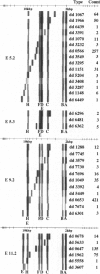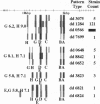Abstract
To classify Listeria monocytogenes using taxonomic characters derived from the rRNA operons and their flanking sequences, we studied a sample of 1346 strains within the taxon. DNA from each strain was digested with a restriction endonuclease, EcoRI. The fragments were separated by gel electrophoresis, immobilized on a membrane, and hybridized with a labeled rRNA operon from Escherichia coli. The pattern of bands, positions, and intensities of hybridized fragments were electronically captured. Software was used to normalize the band positions relative to standards, scale the signal intensity, and reduce the background so that each strain was reproducibly represented in a data base as a pattern. With these methods, L. monocytogenes was resolved into 50 pattern types differing in the length of at least one polymorphic fragment. Pattern types representing multiple strains were recorded as the mathematical average of the strain patterns. Pattern types were arranged by size polymorphisms of assigned rRNA regions into subsets, which revealed the branching genetic structure of the species. Subtracting the polymorphic variants of a specific assigned region from the pattern types and averaging the types within each subset resulted in reduced sets of conserved fragments that could be used to recognize strains of the species. Pattern types and reduced sets of conserved fragments were conserved among different strains of L. monocytogenes but were not observed in total among strains of other species.
Full text
PDF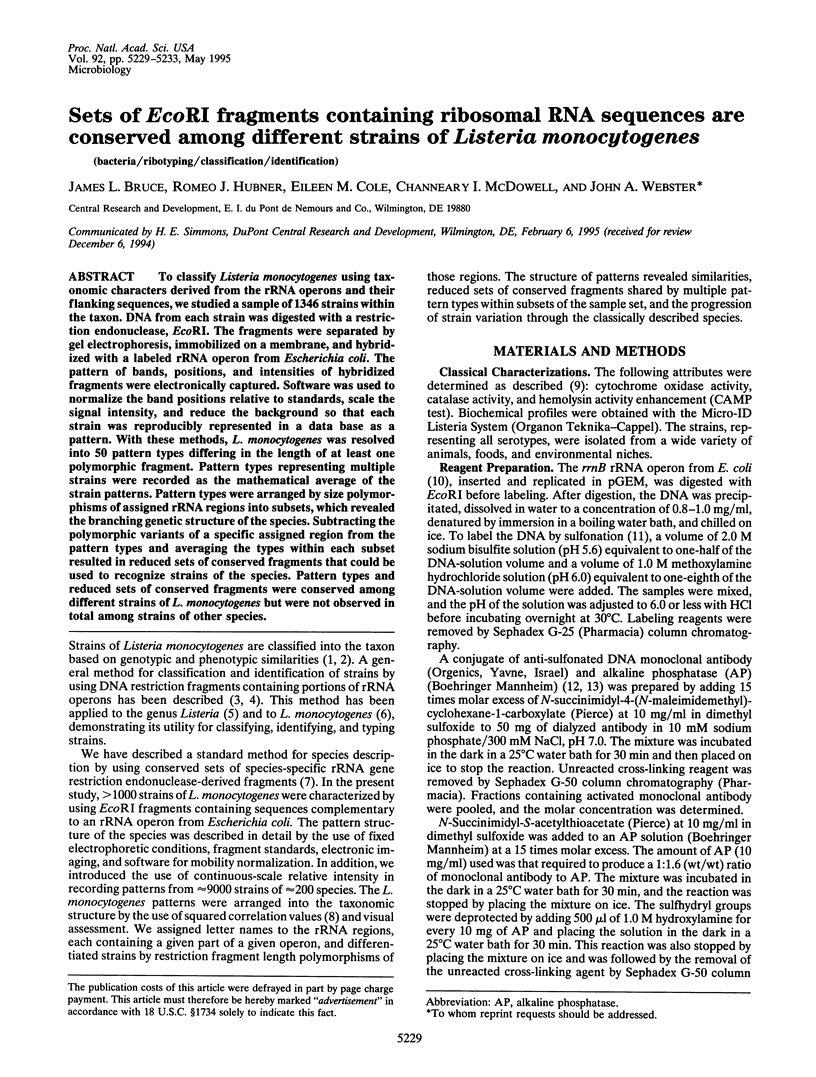
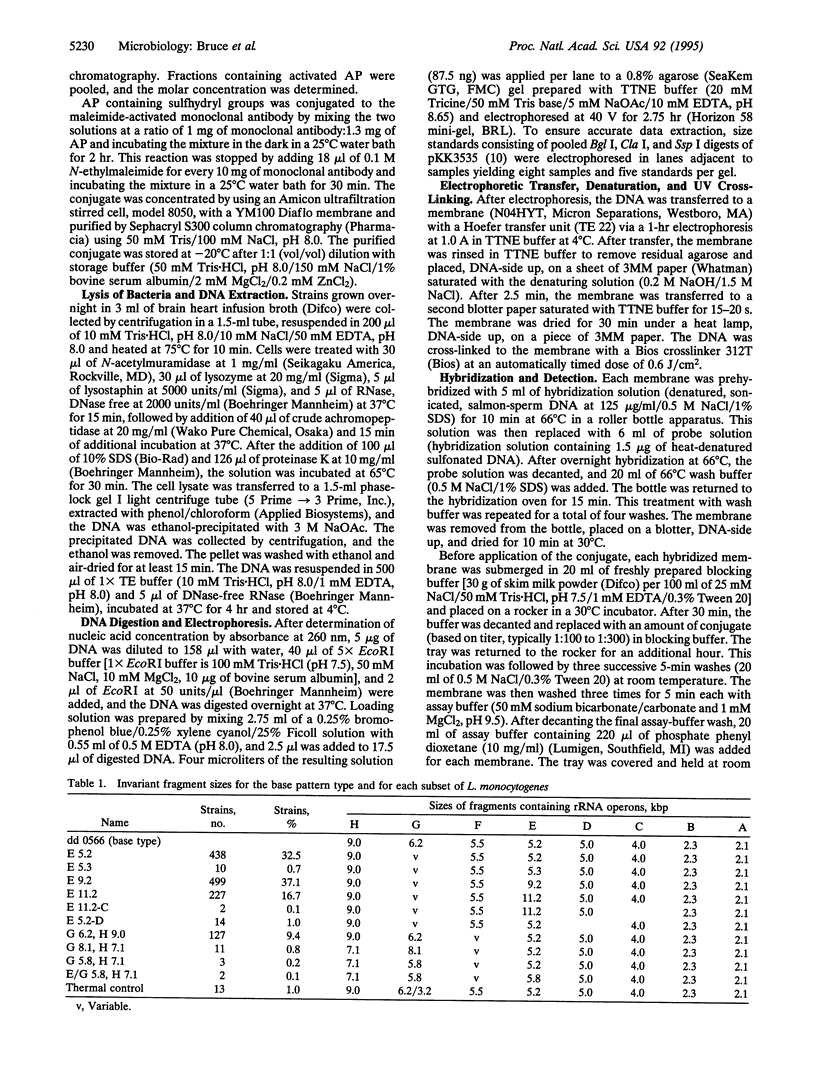
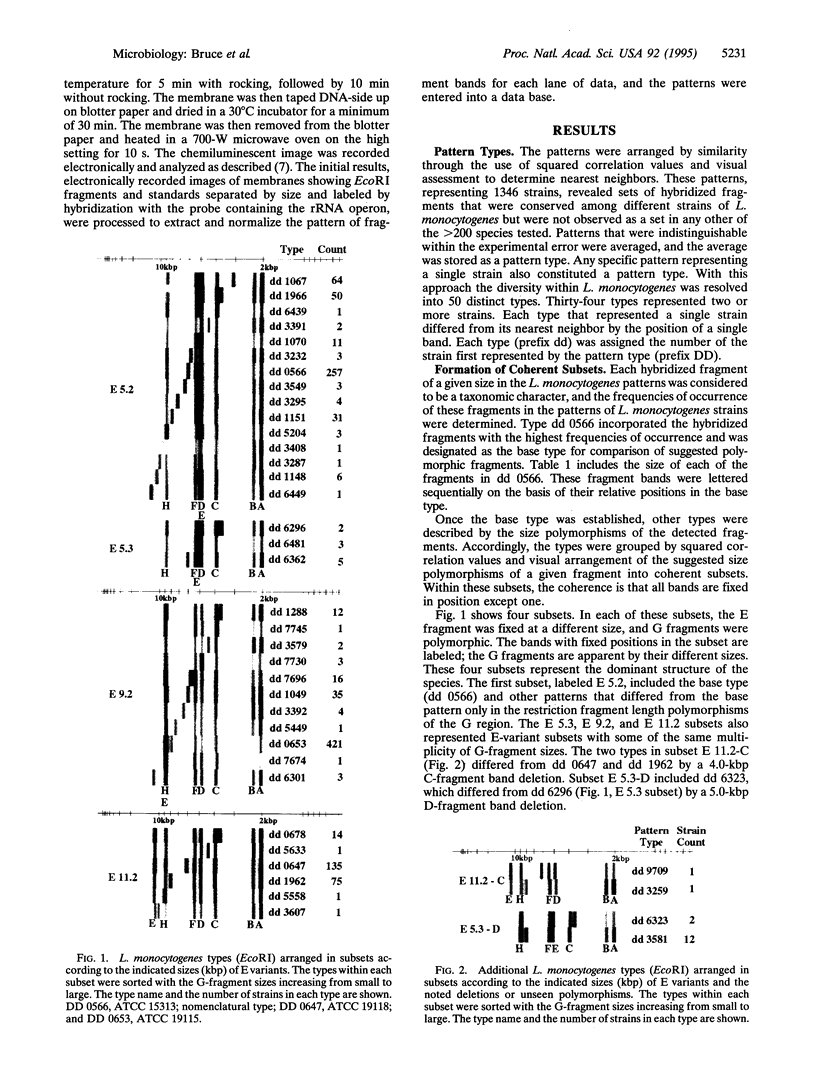
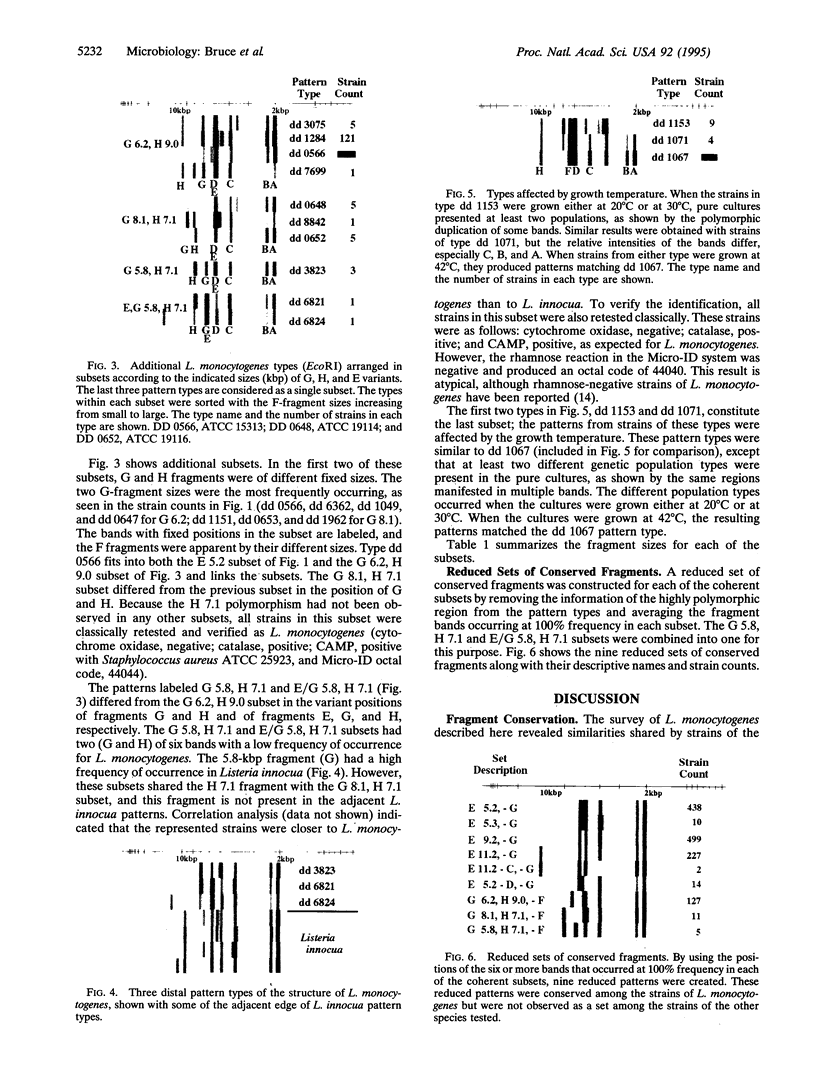
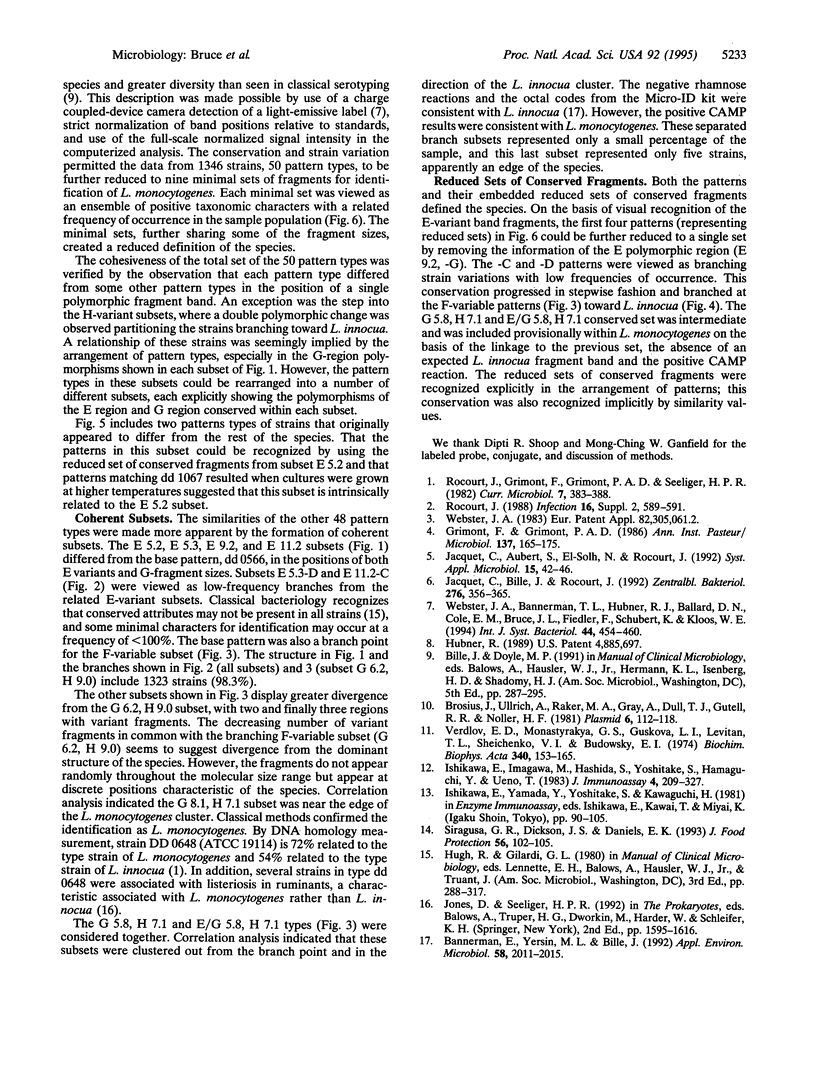
Images in this article
Selected References
These references are in PubMed. This may not be the complete list of references from this article.
- Bannerman E., Yersin M. N., Bille J. Evaluation of the Organon-Teknika MICRO-ID LISTERIA system. Appl Environ Microbiol. 1992 Jun;58(6):2011–2015. doi: 10.1128/aem.58.6.2011-2015.1992. [DOI] [PMC free article] [PubMed] [Google Scholar]
- Brosius J., Ullrich A., Raker M. A., Gray A., Dull T. J., Gutell R. R., Noller H. F. Construction and fine mapping of recombinant plasmids containing the rrnB ribosomal RNA operon of E. coli. Plasmid. 1981 Jul;6(1):112–118. doi: 10.1016/0147-619x(81)90058-5. [DOI] [PubMed] [Google Scholar]
- Grimont F., Grimont P. A. Ribosomal ribonucleic acid gene restriction patterns as potential taxonomic tools. Ann Inst Pasteur Microbiol. 1986 Sep-Oct;137B(2):165–175. doi: 10.1016/s0769-2609(86)80105-3. [DOI] [PubMed] [Google Scholar]
- Ishikawa E., Imagawa M., Hashida S., Yoshitake S., Hamaguchi Y., Ueno T. Enzyme-labeling of antibodies and their fragments for enzyme immunoassay and immunohistochemical staining. J Immunoassay. 1983;4(3):209–327. doi: 10.1080/15321818308057011. [DOI] [PubMed] [Google Scholar]
- Jacquet C., Bille J., Rocourt J. Typing of Listeria monocytogenes by restriction polymorphism of the ribosomal ribonucleic acid gene region. Zentralbl Bakteriol. 1992 Feb;276(3):356–365. doi: 10.1016/s0934-8840(11)80542-6. [DOI] [PubMed] [Google Scholar]
- Verdlov E. D., Monastyrskaya G. S., Guskova L. I., Levitan T. L., Sheichenko V. I., Budowsky E. I. Modification of cytidine residues with a bisulfite-O-methylhydroxylamine mixture. Biochim Biophys Acta. 1974 Mar 8;340(2):153–165. [PubMed] [Google Scholar]
- Webster J. A., Bannerman T. L., Hubner R. J., Ballard D. N., Cole E. M., Bruce J. L., Fiedler F., Schubert K., Kloos W. E. Identification of the Staphylococcus sciuri species group with EcoRI fragments containing rRNA sequences and description of Staphylococcus vitulus sp. nov. Int J Syst Bacteriol. 1994 Jul;44(3):454–460. doi: 10.1099/00207713-44-3-454. [DOI] [PubMed] [Google Scholar]



